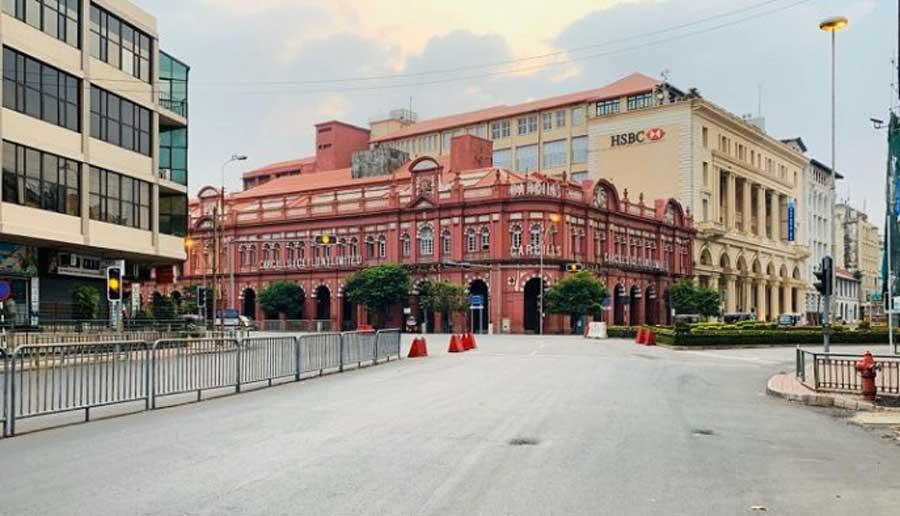Reply To:
Name - Reply Comment

A deserted street in the heart of Colombo due to indefinite curfew to curb COVID-19 spread
Social distancing, distributed work places, these have become part of our vocabulary seamlessly. They now define the new normal, which is not normal at all. Curfew is nothing new in Sri Lanka. We all have had experiences with it. When we were young, we in fact, looked forward to those days. They meant that we could get on to the lane and play cricket. No one really bothered us. 
The new curfew is not so lenient, the virus will not respect human boundaries and as such, no one wants to take a chance.
But do we know how much social distancing has impacted our lives, how much it has changed our way of life in the last month? Other than anecdotal evidence and funny stories of hen-pecked husbands and not so funny stories of abused partners, what else do we know? How can we know?
Well, at least we can get an idea of what has happened and all the data is coming from something that is indispensable these days, your phone.
Google last week publicly made available its community mobility reports. What these reports do is collate data gathered from mobiles that have their location turned on. And Sri Lanka is one of the countries where the data is available, unlike China, which landed us all in this mess.
According to the data since March 8, Sri Lankans going to locations of retail and recreation, that is places like restaurants, cafes, shopping centres, theme parks, museums, libraries and movie theatres has dropped by 86%, according to Google.
Travel to grocery shops, supermarkets and pharmacies has dropped by 87%. Travel to national parks, recreation areas and beaches fell by 57%. In both these cases, interestingly both these categories recorded a surge just before the lockdowns came into effect. There were also surges to supermarkets and groceries when curfew was relaxed.
People have also reduced travel to public transport hubs by 78% and travel to places of work fell by 50%. Travel to work fell even lower, but picked as the lockdown was extended. And staying at home increased by 32%.
The data shows the trends and Google has only released the bare-bones data, but it still gives us an idea of the impact. Another vital data set would be Google traffic data.
"No personally identifiable information, like an individual’s location, contacts or movement, is made available at any point"
To get a better idea we need to run these data sets through others like energy consumption, pollution, sales and such to get a better idea.
Of more immediate value would be to look at this data and compare them to shutdowns, lockdowns initiated by various countries and the spread of COVID-19 to gain insights into the effectiveness or lack of the lockdowns and what worked and what did not. At least now we know how the lockdown works.
On to a more general subject of data privacy. Google is right when it says that the data is gathered from users who have turned their location history on and that any user can and delete the history at any given time.
“No personally identifiable information, like an individual’s location, contacts or movement, is made available at any point,” it adds. Google uses what is known as differential privacy to protect individual users. What it does is add white noise to the data that is mined so that the individual will not be identified. But the white noise depends on how much data specifics are mined.
The reports also give an inclination what providers like Google, Facebook and Apple know about their users. It is these data patterns that make the bedrock of their success.
The writer is currently pursuing a Masters by Research at CQ University, Melbourne on online journalism and trauma
Twitter - @amanthap